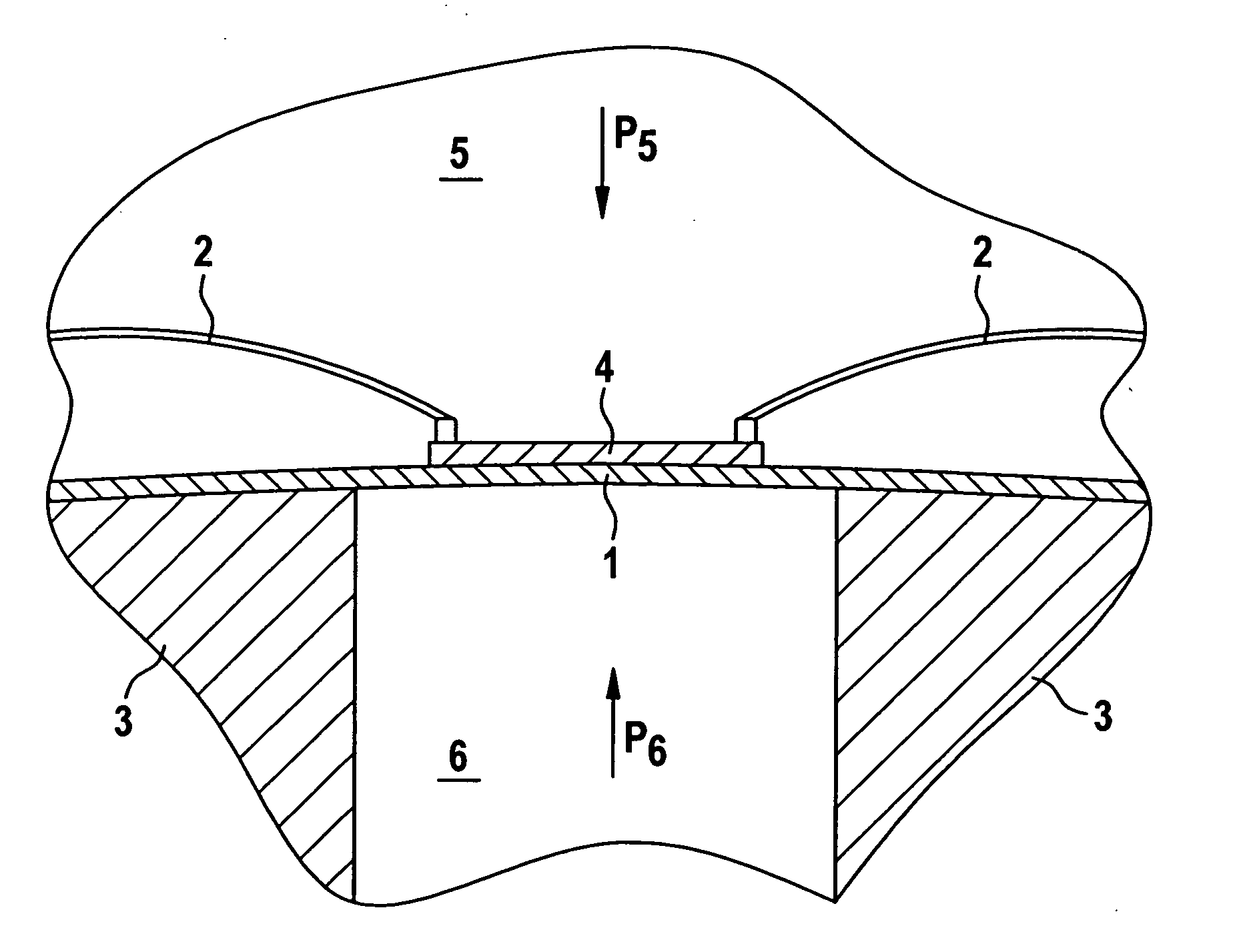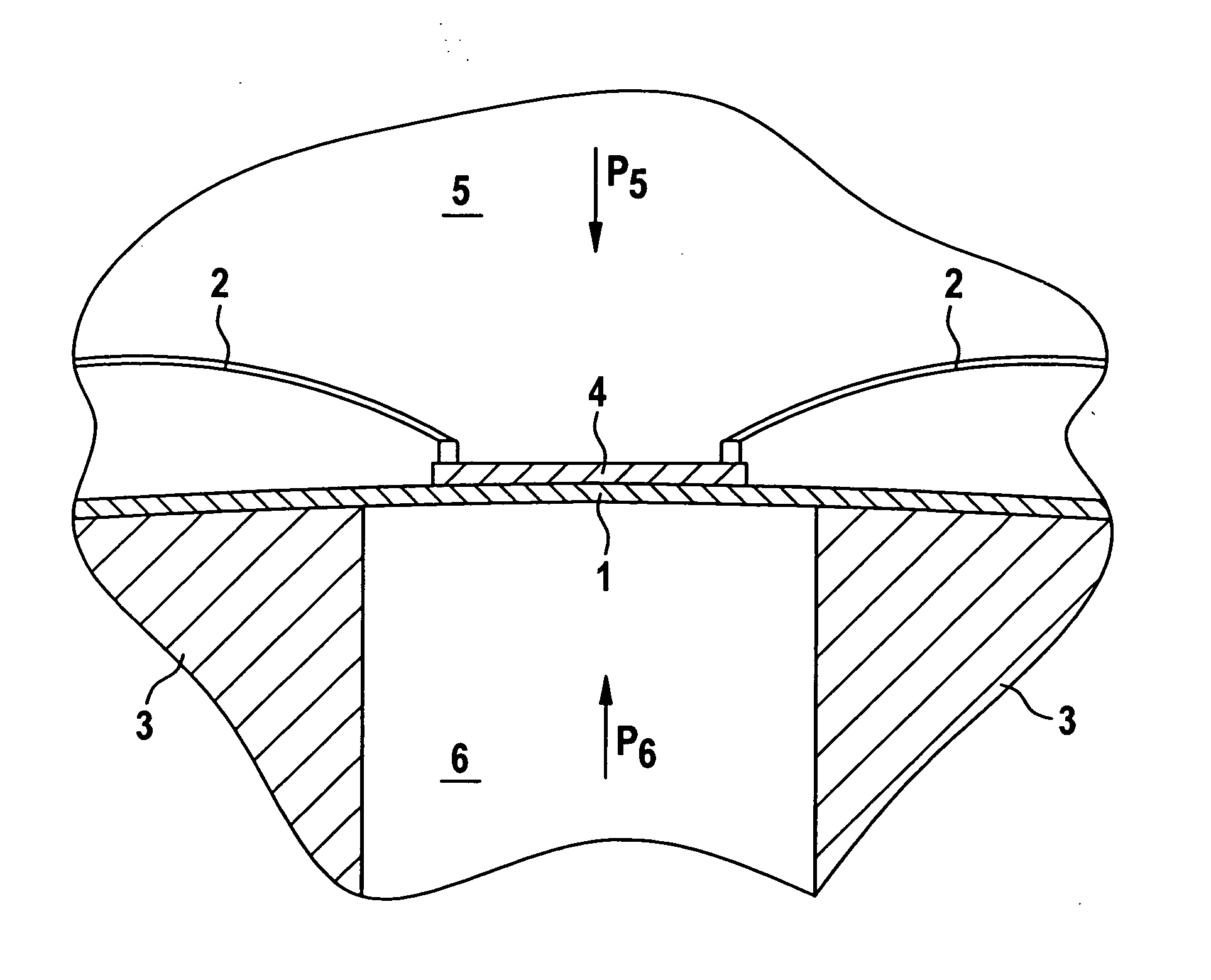Micromechanical high-pressure sensor
a high-pressure sensor, micro-mechanical technology, applied in the direction of fluid pressure measurement, fluid pressure measurement by electric/magnetic elements, instruments, etc., can solve problems such as membrane deformation, and achieve the effects of increasing sensitivity, increasing sensitivity, and stabilizing the entire layer system
- Summary
- Abstract
- Description
- Claims
- Application Information
AI Technical Summary
Benefits of technology
Problems solved by technology
Method used
Image
Examples
Embodiment Construction
[0018] The FIGURE schematically illustrates the structure of a pressure sensor as it is produced in the present invention. A membrane 1 is mounted in a frame 3 in such a way that a gas volume 5 having pressure p5 is separated from a gas volume 6 having pressure p6. Membrane 1 may be made of the same material as the frame or it may be produced from a completely different material. No pressure equalization through membrane 1 is able to take place between gas volume 5 and gas volume 6. Located on membrane 1 is a resistance layer 4, which may be made of semiconducting or conducting materials. For evaluation of the measured variables that are detected by resistance layer 4, contactings 2 are affixed on the resistance layer, which allow the measured variables to be forwarded for analysis.
[0019] The method of functioning of the illustrated pressure sensor via resistance layer 4 will be explained briefly in the following.
[0020] In response to a pressure change on one side of membrane 1, f...
PUM
| Property | Measurement | Unit |
|---|---|---|
| temperature | aaaaa | aaaaa |
| temperature | aaaaa | aaaaa |
| temperatures | aaaaa | aaaaa |
Abstract
Description
Claims
Application Information
 Login to View More
Login to View More - R&D
- Intellectual Property
- Life Sciences
- Materials
- Tech Scout
- Unparalleled Data Quality
- Higher Quality Content
- 60% Fewer Hallucinations
Browse by: Latest US Patents, China's latest patents, Technical Efficacy Thesaurus, Application Domain, Technology Topic, Popular Technical Reports.
© 2025 PatSnap. All rights reserved.Legal|Privacy policy|Modern Slavery Act Transparency Statement|Sitemap|About US| Contact US: help@patsnap.com


